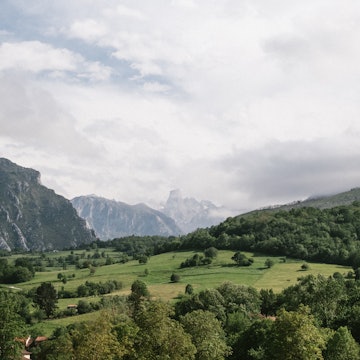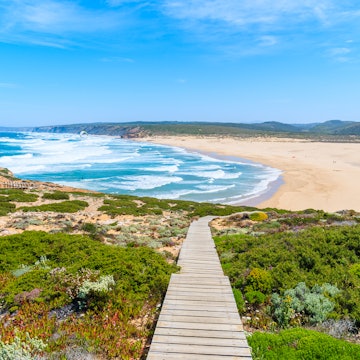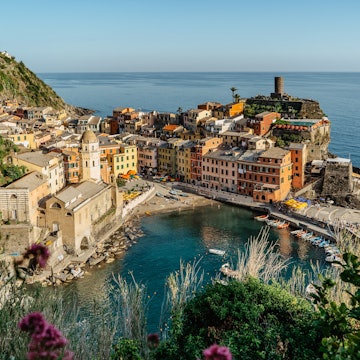
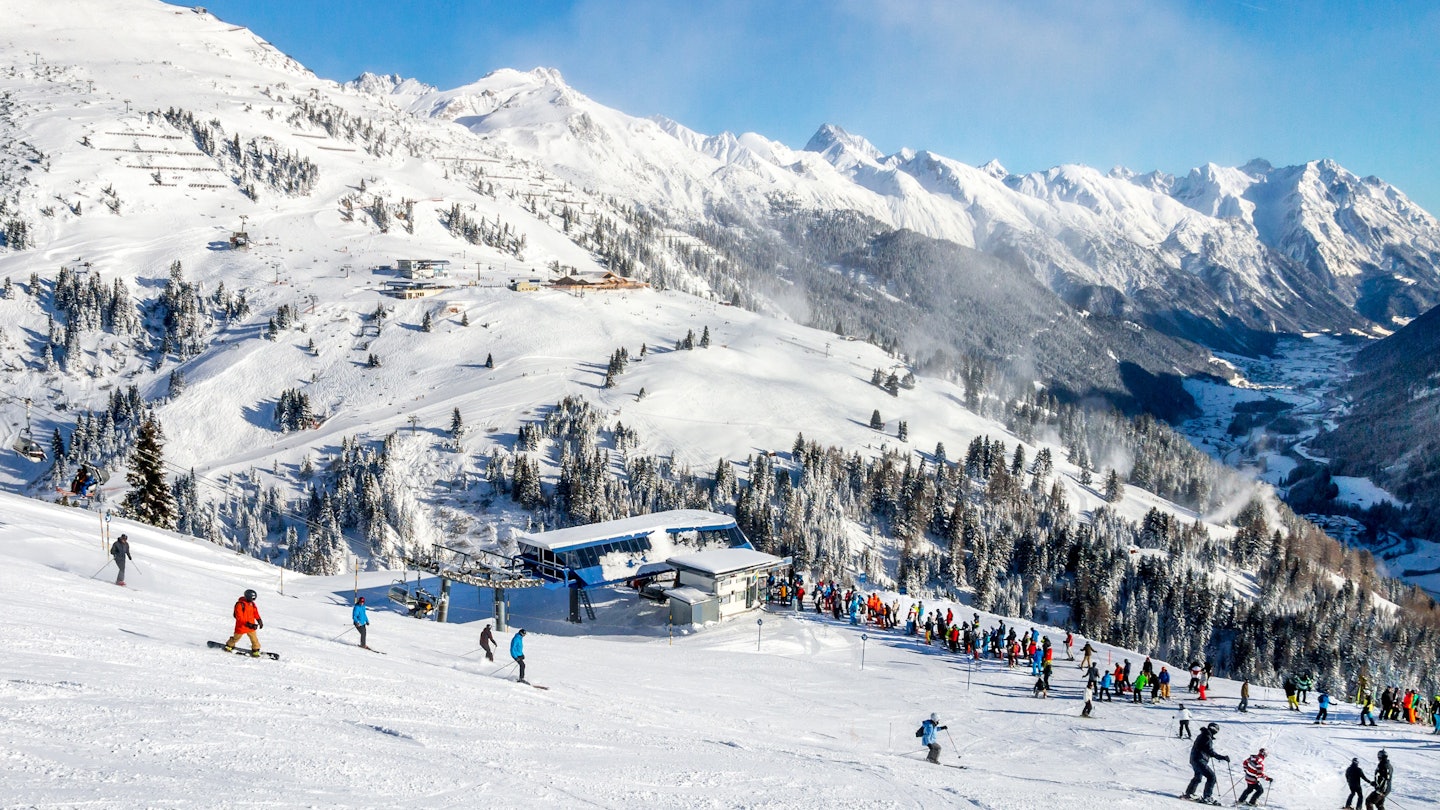
Skiers on the slopes at St Anton am Arlberg. Boris-B / Shutterstock
Rippling over from southern Germany into Austria, the Northern Limestone Alps are some of Europe’s most phenomenal mountains. When the first flakes fall, their heights hum with skiers and boarders. No matter whether you’re looking for black runs and rollicking après-ski or a culture-crammed winter break, there’s a city and slope with your name on it.
Excellent transport connections make getting from city hubs to relaxed slopes a breeze, which means you can be schussing down runs on Germany’s highest peak, 2962m Zugspitze, in the morning and imbibing in stein-swinging medieval beer halls in Munich in the evening. Or lapping up the splendor of Innsbruck’s Hapsburg palaces one minute and racing down the Nordkette slopes the next. Here is the inside scoop on skiing either side of the border.

Innsbruck, Austria
As cities with Alpine backdrops go, Innsbruck, capital of Tyrol, is tough to beat, thanks to the pop-up book effect of the Nordkette Alps. A funicular designed by Zaha Hadid takes you from city to slopes in no time. The panorama opens up at 2300m Hafelekar, where you can slalom above the spires and rooftops of Innsbruck.
Beyond the city itself, Tyrol is blessed with some of the most varied skiing in Europe. To the west is the austere Arlberg region, home to wild child St Anton am Arlberg, where the first ski club in the Alps was launched in 1901. Experienced skiers head here for hardcore downhill runs (not to mention sublime boarding and off-piste). After a day spent powder pounding, slopeside bars tempt revellers with some of the hottest après-ski in the Alps.
Also just over an hour from Innsbruck are resorts like Mayrhofen in the folksy, ludicrously pretty Zillertal and ritzy Kitzbühel, host of the mother of all downhill ski races in January: the Hahnenkamm-Rennen.
Elsewhere, if you dare, leap into the void on the heart-stopping, hell-for-leather Hafelekar-Rinne in Innsbruck, the Harikiri in Mayrhofen or the knee-trembling Streif with its 85% gradient in Kitzbühel.
Beyond the slopes
Tie in some skiing with sightseeing in Innsbruck. The Gothic Hofkirche and the medieval lanes of the Altstadt, where the Goldenes Dachl shimmers, should be high on your agenda.
Vienna, Austria
Vienna for skiing is by no means an obvious choice, but the Austrian capital is fringed by hills that rise abruptly to mountains in Lower Austria. It’s just an hour-and-a-quarter drive or train ride, for instance, to Semmering, where many Viennese folk let off steam on downhill slopes in winter that have hosted numerous World Cup ski races. Here grandiose peaks fling up from deeply folded valleys and spa hotels invite post-ski relaxation. The most spectacular way to get there it is on the Unesco-listed Semmeringbahn.
One pass covers 14 ski lifts and 25 miles (40km) of slopes reaching up to 1774m, which are largely geared towards beginners and intermediates. Besides the usual downhill, there’s a freestyle park, night skiing, tobogganing, ice-skating, snow tubing, and curling. Another must-ski attraction the region is Stuhleck, the highest peak in the Eastern Alps at 1782m.
Beyond the slopes
Vienna is perhaps at its most enticing in winter, when Christmas markets (December to January) twinkle festively, the coffee houses come into their own and the ball season is in full swing (January and February). Combine skiing with a spin of the city’s big-hitter galleries and lavish imperial palaces.

Salzburg, Austria
Remember the mountains near Salzburg that Maria twirled down in the opening scene of The Sound of Music? Well, those same hills are alive with the sound of swishing skis in winter. Salzburg is a cracking base for striking out into the wider region of Salzburgerland. Covering a whopping 470 miles (760km) of pistes, 270 ski lifts and 25 resorts, Ski Amadé is one of Europe’s biggest ski regions, with everything from gentle, tree-lined runs to glorious off-piste.
There’s moderate downhill and good cross-country skiing on the wooded, 1853m Untersberg, straddling the Austrian-German border, right on the city’s doorstep, but things step up a gear further afield. Dramatically set amid the gnarly limestone peaks of the Dachstein range, Filzmoos, for instance, is a fine choice for families, with few lift lines, quaint Alpine looks, and horse-drawn sleigh rides.
Head to lakeside Zell am See and take the cable car up to the 3029m Kitzsteinhorn Glacier, where there’s skiing and boarding 10 months of the year. Enjoy the staggering views of the Hohe Tauern National Park and the distinctive profile of Austria’s highest peak, 3798m Grossglockner. Cool drinks are served at its Ice Camp igloo.
Beyond the slopes
Factor in time for a romp of Salzburg’s hilltop fortress, stately squares, Mozart residences and Unesco World Heritage baroque Old Town.
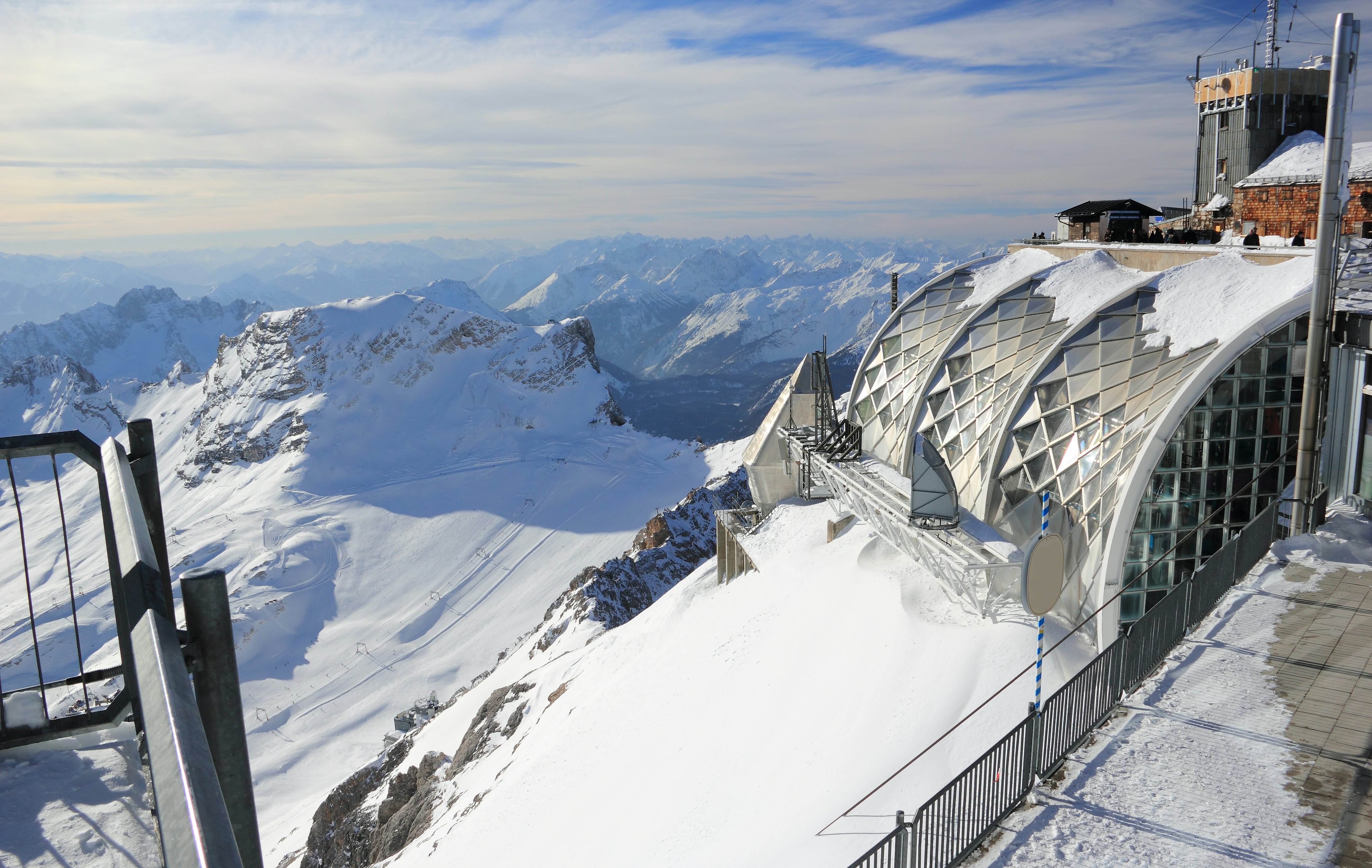
Munich, Germany
On clear days, tantalising views of the Bavarian Alps puckering up on the horizon from Munich have skiers itching to hit the slopes. And it’s easy to do precisely that. Just over an hour south of the city, the mountains fling up above cute, chalet-lined villages, forested hills and towns topped by onion-domed churches on the German-Austrian border. The skiing here is Germany’s most extensive and the scenery is Christmas card stuff.
Incredible runs can be found at Garmisch-Partenkirschen, with 25 miles (40km) of challenging runs, plenty of charm and an impeccable snow record. It has played host to international races and Olympic ski jumping. A mere snowball-throw away is Germany’s highest peak, 2962m Zugspitze, right on the Austrian border, reached by a cogwheel train and super-steep cable car. The views are out of this world.
Beyond the slopes
Munich is rammed with history and culture – from Old Master paintings at the Alte Pinakothek to blingy treasures at the Residenz palace, and state-of-the-art motors at BMW Welt. And, there are always the beer halls, of course.

Stuttgart, Germany
We can feel you raising an eyebrow at the mention of Stuttgart for skiing, but bear with us. The Black Forest, or Schwarzwald, spreading south of the city offers mile after gorgeous mile of tightly woven valleys, fir forests and half-timbered villages. Snow here isn’t a guarantee because of lower elevations, but when it does arrive it frosts the region into a winter wonderland ripe for a Grimm bedtime story. The low-key vibe makes this a fine choice for families and beginners.
As for the skiing, the downhill is mostly easy and limited to just a smattering of hills, but the Nordic or cross-country (Langlauf as the locals call it) is wunderbar and far cheaper. Gliding through a snowy forest in quiet exhilaration as the sun rakes through the treetops provides a very different kind of thrill.
Meanwhile, reached by cable car, the bald summit of Feldberg (the region’s highest peak at 1493m) is one of the few places where you can downhill ski. The views reach to the Vosges and French and Swiss Alps. If skiing’s not your bag, check out the snowshoeing tours offered here.
Beyond the slopes
Stuttgart has an impressive baroque square, Schlossplatz and a clutch of decent art galleries. For Black Forest cake and a glimpse of Germany’s highest waterfall and biggest cuckoo clock, detour south to Triberg.
You might also like:
Where to find winter sun in Europe
ski-trip-link" href="https://www.lonelyplanet.com/articles/how-to-save-money-ski-holiday">10 tips for saving money on your next ski trip
ski-resorts-link" href="https://www.lonelyplanet.com/articles/europes-best-budget-ski-resorts">Europe's best budget ski resorts
Article first published in September 2017, and last updated in November 2020.








